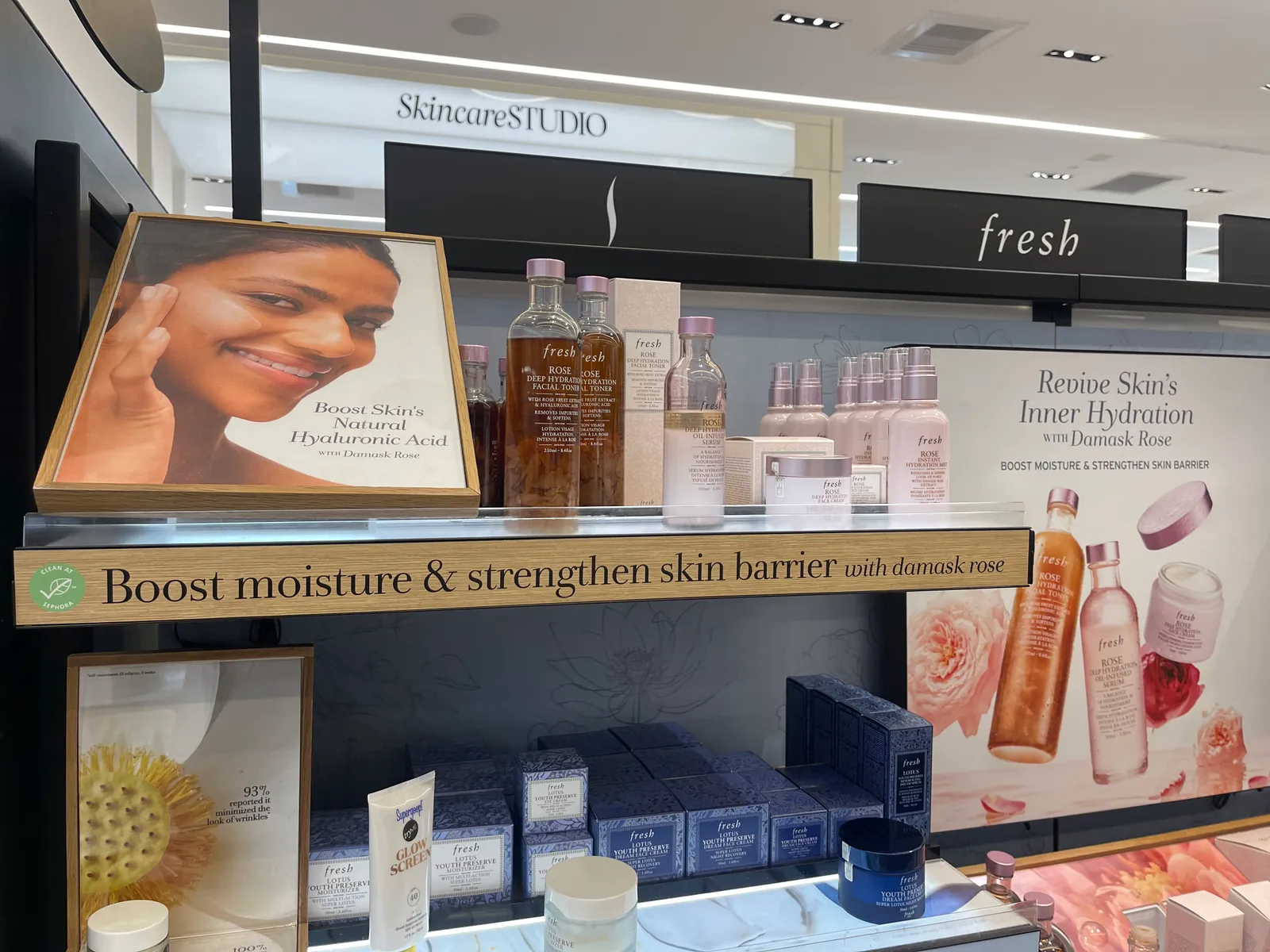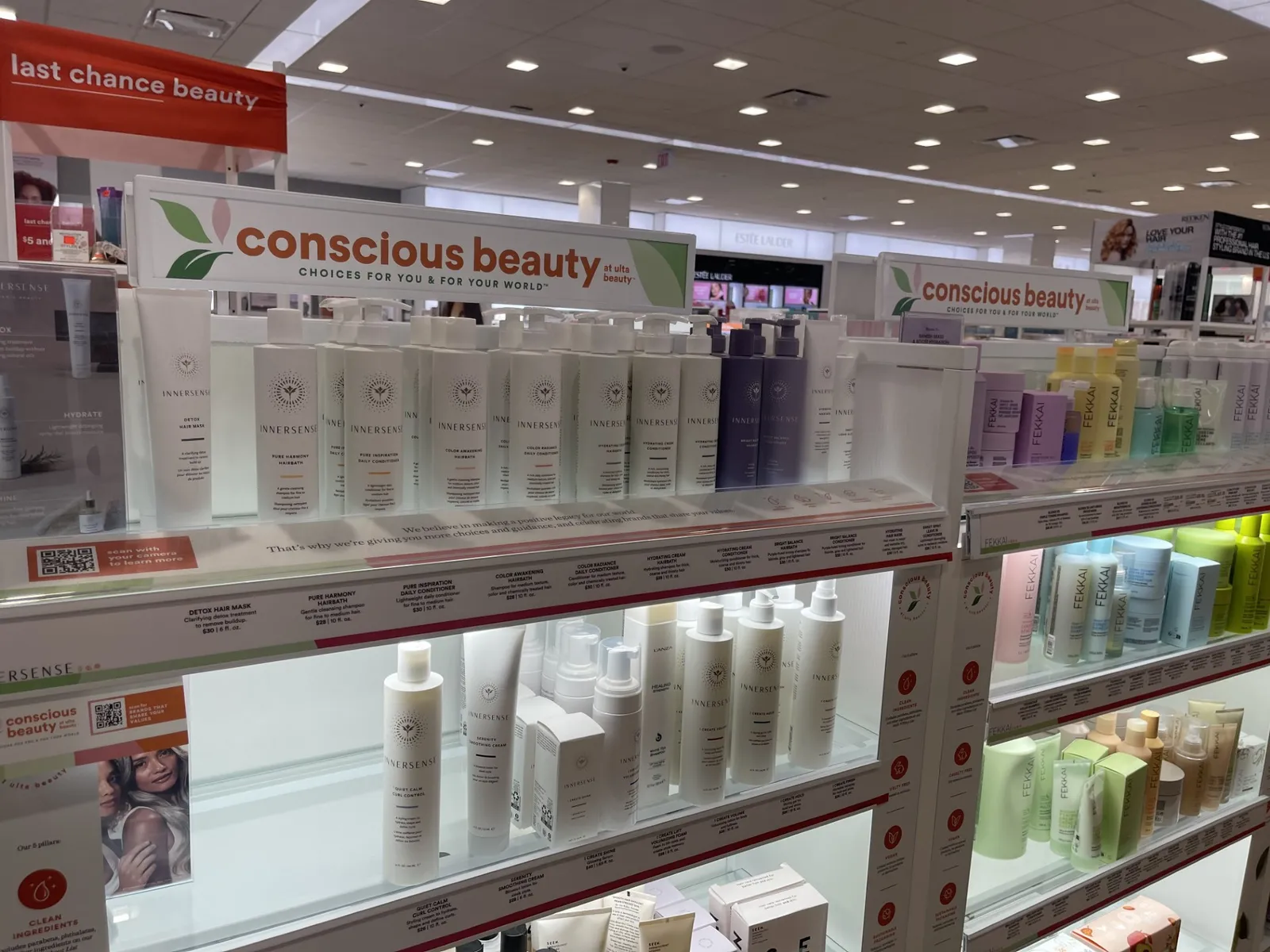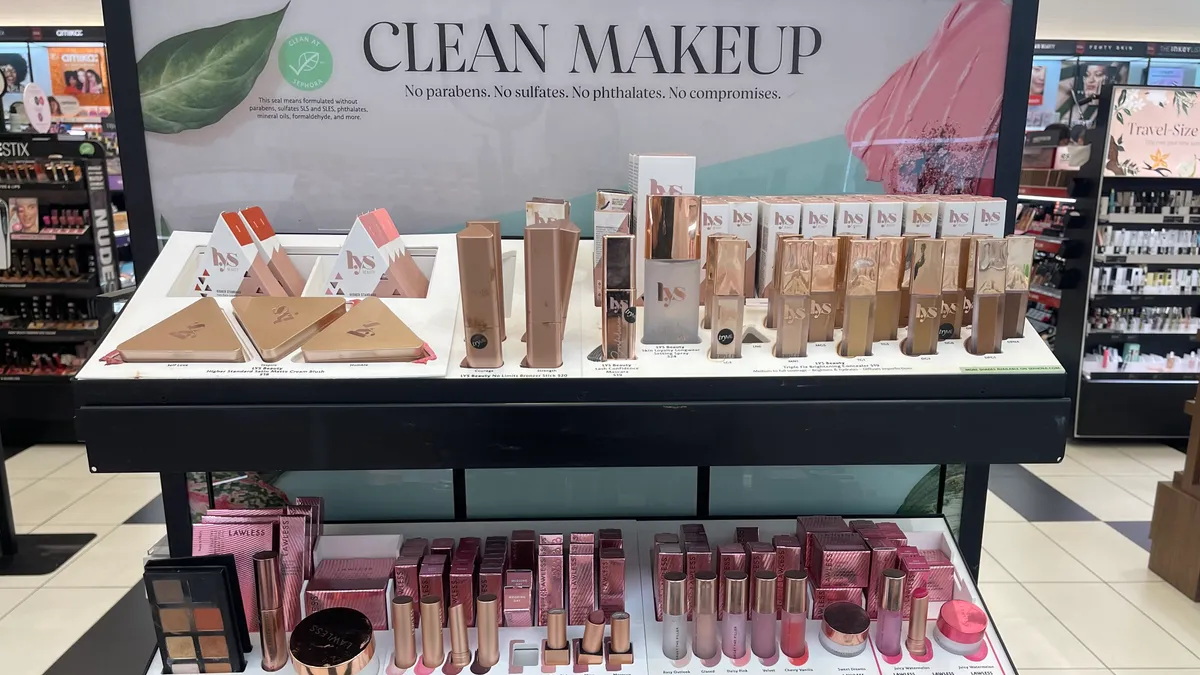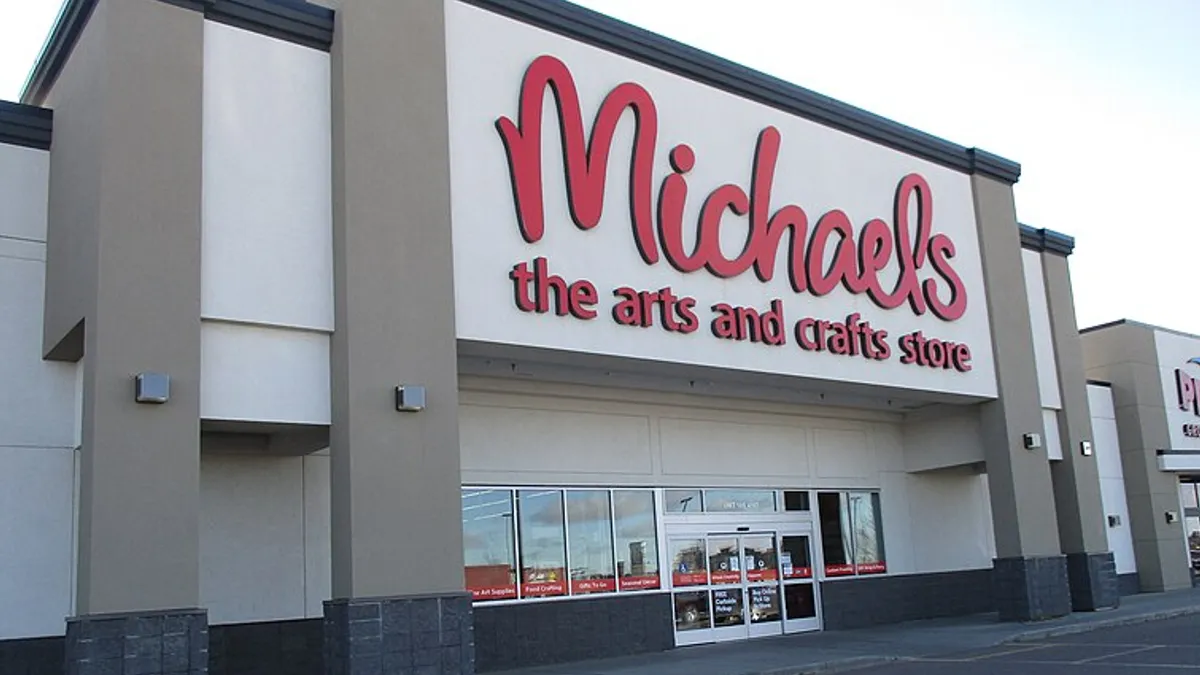The beauty industry is no stranger to change, with trends coming and going. One trend seeing major investments and commitments from retailers in recent years is clean beauty.
Over 65% of overall consumers seek clean ingredients in their purchases, according to Circana data provided by senior vice president and beauty industry adviser Larissa Jensen.
There are a number of reasons consumers opt for clean beauty products — from medical reasons, like allergies, to a desire to find more sustainable alternatives. What matters most depends on the customer, but certain demographics are more interested than others.
Millennials and Gen Z in particular have expressed the most interest in the category, per Circana. While interest in the category is prevalent, regulation is not.
Steps are being taken to provide greater transparency. The Food and Drug Administration recently released draft guidance on cosmetic product registrations and listings.
But because there is no industry standard for clean beauty products, customers are taking it upon themselves to do their own research. Half of Gen Z respondents rely on social media when it comes to deciding what makeup to purchase, and of those consumers, 75% said they turn to TikTok as a source or information, according to Circana data. As of October 2023, the #cleanbeauty tag on TikTok reached 2 billion views.
However, turning to TikTok for skin care knowledge and product recommendations can introduce other challenges, with influencers of varying credibility contributing to the conversation around clean beauty.
And to further complicate the narrative, retailers like Ulta Beauty and Sephora in recent years have introduced their own standards for the category.
What makes a product “clean” is convoluted and varies widely. From natural to non-comedogenic, plant-based, organic, non-toxic and environmentally friendly — how are retailers cutting through the noise?
A generational trend?
Younger consumers are prioritizing the ingredients in the products they purchase.
Over 50% of Gen Z look closely at ingredients in beauty and personal care products prior to making a purchase, according to Ulta’s annual ESG report released in April. Ninety percent of Gen Z and younger millennials, are interested in purchasing clean beauty products in the future, the retailer found. By 2027, Ulta expects overall revenue to grow 12% in the global clean beauty market.
Independent research is common in clean beauty. The lack of regulation has led some consumers, particularly Gen Z, to rely on social media to guide their searches.
“They have a huge following. That’s great. But do they know anything about beauty? Do they know anything about skin care?”

Catie Wiggy
CEO and Founder of Creative Beauty Collective
This means that not only are retailers and brands shaping the definition of clean beauty, but creators and influencers that tag their content in the category also get a say. TikTok is full of endless scrolling through product reviews, swatch tests, must-haves and more in clean beauty and beyond. A consumer’s understanding of clean beauty can be shaped by what they see online.
This can create problems around misinformation. Catie Wiggy, CEO and founder of the Creative Beauty Collective, a boutique marketing agency that focuses on indie beauty, wellness and CBD brands, has seen this first hand.
“They have a huge following,” Wiggy said. “That's great. But do they know anything about beauty? Do they know anything about skin care? Are they licensed? Are they a dermatologist? Esthetician? What is their experience? Are they a chemist product formulator? What is the knowledge base to back up the advice that they're giving? Or the promotion of the brand? Why are they aligned with it?”
For shoppers, taking the additional step to research a creator’s credibility is best practice, according to Wiggy, who suggested leaning on trained experts like estheticians or even staff from online retailers like Credo or within the beauty aisles of Whole Foods.
To combat the complications of individual research, Wiggy also feels that brands themselves should be responsible for keeping their product information transparent.
“You want to help the consumers do less homework, right?” Wiggy said. “I think as the manufacturers, as the brands behind clean beauty, help your communities engage in education so they know what ingredients to avoid, what ingredients your products might be made without and why they are clean, or why they are good. Help them understand some of those standards.”
How retailers are navigating the space
While more consumers are actively looking for clean beauty products, finding them can be difficult. To address this, top beauty retailers like Ulta and Sephora have introduced their own clean beauty programs.
In 2018, Sephora debuted its “Clean at Sephora” category, which includes cosmetics, skin care, hair care and fragrances that are free from things like parabens, formaldehyde and phtalates. The retailer displays products both in store and on its website that meet the criteria.
“Since we launched, we’ve continued to improve our assortment with science-backed innovations and by eliminating even more unwanted ingredients,” the retailer’s website reads. “That means our Clean seal has the highest standards across the industry.” Sephora declined Retail Dive’s requests for comment regarding its clean beauty label, clean beauty standards and how it selects brands.
In addition to Sephora’s “Clean at Sephora” label, the retailer also offers its “Clean + Planet Positive” labeling. Sephora labels a product as clean and planet positive if it meets all five requirements: sustainable sourcing, climate commitment, responsible packaging, environmental giving and has clean ingredients. Each pillar has its own set of requirements. Specifically for the climate commitment pillar, a brand must meet at least one of the three following climate goals: carbon-neutral operations, greenhouse gas emissions reduction, or have a corporate office or its owned or leased operations powered by 100% renewable energy. Under its environmental giving pillar, a brand must either donate at least 1% of its profit to a high-impact, long-giving program that is multiyear and ongoing, or be a Certified B-corporation.

Ulta Beauty similarly has been working to highlight clean beauty products. The retailer in 2020 launched its Conscious Beauty program, which certifies products under five pillars: clean ingredients, cruelty free, vegan, sustainable packaging and positive impact. Over 300 brands at the retailer are certified to one or more pillars, according to the retailer’s site.
In Ulta’s stores, QR codes are placed throughout that link to more information on how a product qualifies in the Conscious Beauty program.

“Ulta’s commitment to transparency is beyond the shelves and I think you’ll find that in our stores and in our reporting on brands and items,” Jodi Caro, general counsel and chief risk and compliance officer at Ulta Beauty, said in an interview. “We want the customer to be able to know what’s in it before they buy and that they can trust a label to say the right thing.”
Visits to Ulta and Sephora stores show that while both retailers label specific items and brands under their clean programming, they don't specify exactly which pillar is being met on shelves. In Ulta specifically, consumers must scan a QR code to access information related to how the product meets requirements within the clean beauty program.
Customers often trust retailers and brands to do the work for them in identifying what’s clean based on shelving and categorizing. But industry experts believe there’s more that can be done.
‘A real challenge’ for retailers
As more consumers, particularly those in younger generations, prioritize products that are more environmentally friendly, sustainability is another aspect driving the clean beauty category.
According to Ulta’s ESG report, 67% of shoppers have made changes in order to lessen their environmental impact, such as seeking recyclable or environmentally friendly packaging in products.
Ingredient sourcing, packaging, manufacturing and other means can determine a product’s sustainability.
Tensie Whelan, a New York University professor and director of the school’s Center for Sustainable Business, helps business leaders embed sustainability into their business strategies. She said the best sustainable business practices acknowledge a net zero commitment by 2050 with clear targets by 2030, and address any climate impacts or significant water usage.
“The word ‘natural’ doesn’t mean anything, right? There’s no criteria around it. So companies can call it that, and you have no idea what it means.”

Tensie Whelan
NYU Professor, Director for the NYU Stern Center of Sustainable Buisness
Whelan emphasized a need for transparency from brands that claim to be clean.
“It is a real challenge,” Whelan said. “For example, the word ‘natural’ doesn't mean anything, right? There's no criteria around it. So companies can call it that, and you have no idea what it means. So I do think that being clear and transparent and authentic about your claims is really critical.”
Brands should consider conducting an assessment for the materials used in products, as well as the social and environmental issues that impact their businesses the most, according to Whelan. She also suggested talking to stakeholders about their perception of what's important and developing a strategy that manages both the risks and opportunities posed by those issues.
But because there’s no industry standard for what’s considered “clean” — only specific certifications from independent organizations — challenges arise for retailers and brands. Third-party certification organizations like the Rainforest Alliance and Leaping Bunny are labels customers seek out versus broader, less-specific labels, Whelan said.
“That's what clean beauty is, right? Using a simple list of ingredients and avoiding, to the extent possible, preservatives and chemicals, complicated ingredients,” Whelan said. “Because every [product] is going to vary, there isn't necessarily a certification for that. But you can be very clear on your website, any sort of information that people can get to, from the packaging: What is in there? What are those ingredients? So I think that's another way to build trust.”
Brands also need to be transparent about their supply chain operations, worker treatment and payment, Whelan said.
Steps toward regulation
Wiggy describes the clean beauty category as a sliding scale. She suggests approaching a product by asking, “How clean is this product?” versus just asking, “Is this product clean?” Brands focus on different aspects of clean beauty: While one brand may place a bigger emphasis on the cleanliness of its ingredients, another may prioritize its products' environmental impact, for example.
“I look at it more as green beauty,” Wiggy said. “That whole picture is about good clean ingredients, good clean practices, sustainable sourcing, packaging, and putting out a better product for the long term.”
The lack of industry-wide standards for clean beauty has left retailers and brands to their own devices. While very few regulations exist, steps are being taken.
The FDA on Aug. 7 issued draft guidance that has the potential to impact the clean beauty industry. As mandated by the 2022 Modernization of Cosmetics Regulation Act, manufacturers will now have to register their cosmetic product facilities with the FDA.
The FDA on Oct. 13 also released a Structured Product Labeling implementation guide intended to provide tools to companies. Brands will submit data via the FDA’s Electronic Submissions Gateway software, as mandated by MoCRA.
Additionally, companies must submit a list of all their products and the ingredients in them. Brands must update these details annually. The FDA set a statutory deadline of Dec. 29 for companies to register and list their products.
The move from the FDA — which Wiggy considers to be one of the biggest stakeholders when it comes to clean beauty regulation — is a positive step toward improving consumer safety, but doesn’t address compliance, data accuracy and resource allocation.
“Additional regulatory actions are needed to strengthen consumer protection in this industry,” Wiggy said in emailed comments. “The FDA could consider implementing more rigorous safety testing requirements for personal care products, especially for ingredients with limited safety data. This could help identify and prevent potentially harmful products from entering the market.”
Clear labeling requirements with a set standard can help consumers better understand ingredients, Wiggy said. This can mean standardizing terms and definitions for common ingredients, fragrances and allergens. The FDA could also use public education campaigns so consumers understand product labels and can make more informed choices.
“Ultimately, brands that are transparent about their ingredients and manufacturing processes will likely gain a competitive advantage in the market, like those already leading the ‘clean beauty’ space,” Wiggy said. “This can encourage other companies to improve their practices and promote safer products.”





















